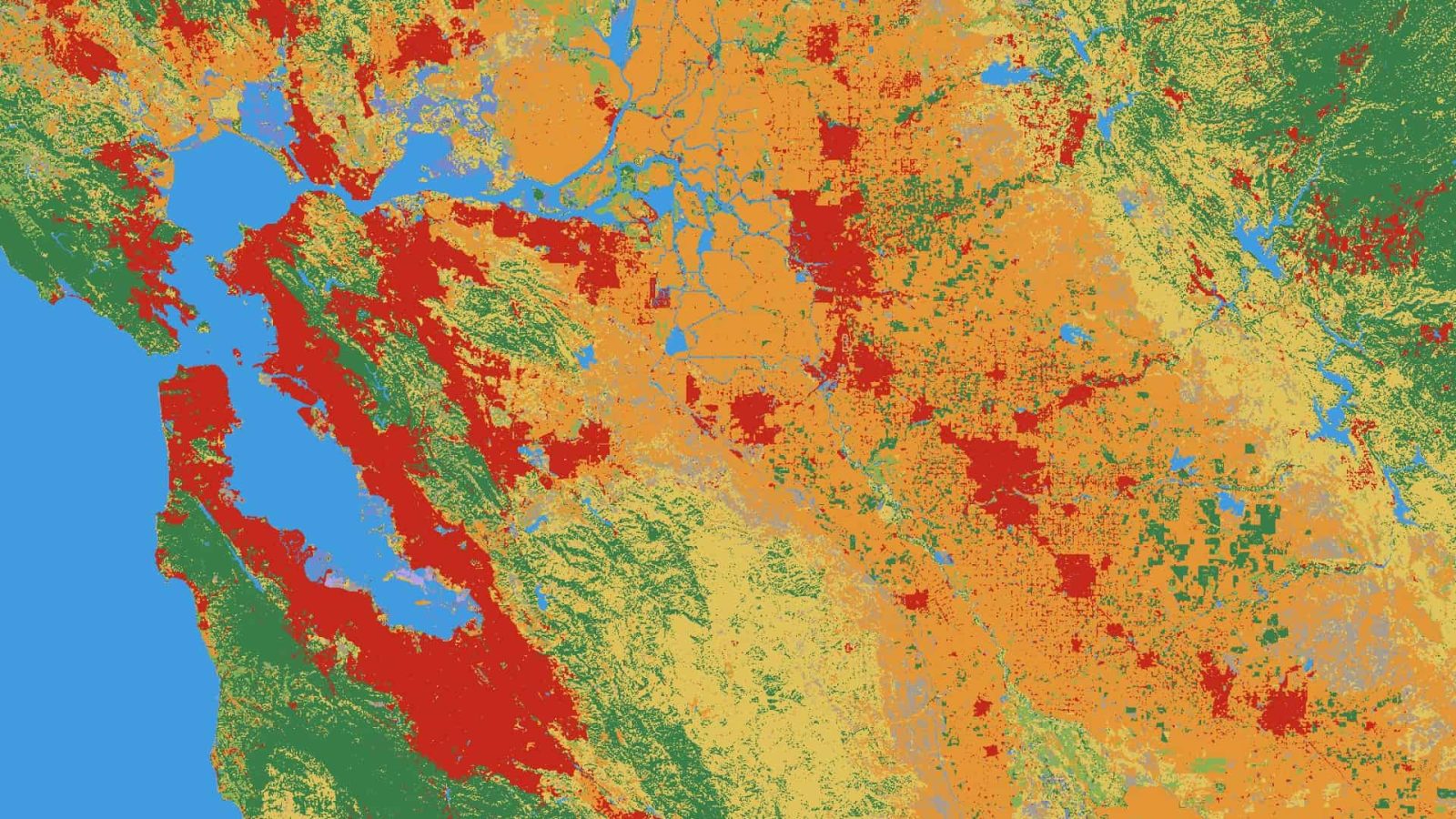
Tracking how the planet changes in response to fires, floods, and other “environmental disturbances amplified by climate change” or human activity (deforestation and urban development) is important for creating solutions. Google is now using its Earth Engine and AI Platform to make data more readily available with “Dynamic World.”
Historically, it has been difficult to access detailed, up-to-date land cover data which documents how much of a region is covered with different land and water types, such as wetlands, forests, agricultural crops, trees, urban development and more.
Created in partnership with the World Resources Institute (WRI), Dynamic World offers “global, near real-time land cover data at a ten-meter resolution.” AI and cloud computing is used to classify whether a pixel (~1,100 square feet of land) of satellite imagery contains water, flooded vegetation, built-up areas, trees, crops, bare ground, grass, shrub/scrub, or snow/ice.
With this information, people — like scientists and policymakers — can monitor and understand land and ecosystems so they can make more accurate predictions and effective plans to protect our planet in the future.
Dynamic World is specifically taking images from the Copernicus Sentinel-2 to produce 5,000 images a day with data as recent as two days old. In comparison:
Current global land cover maps can take months to produce, and typically only provide land cover data on a monthly or annual basis.
Google is making Dynamic World available as an open and free dataset, while peer-reviewed paper in Nature Scientific Data has been published.
The global land squeeze pressures us to find smarter, efficient, and more sustainable ways to use land. If the world is to produce what is needed from land, protect the nature that remains and restore some of what has been lost, we need trusted, near real-time monitoring of every hectare of the planet.
Craig Hanson, Vice President of Food, Forests, Water and the Ocean at WRI
FTC: We use income earning auto affiliate links. More.





Comments